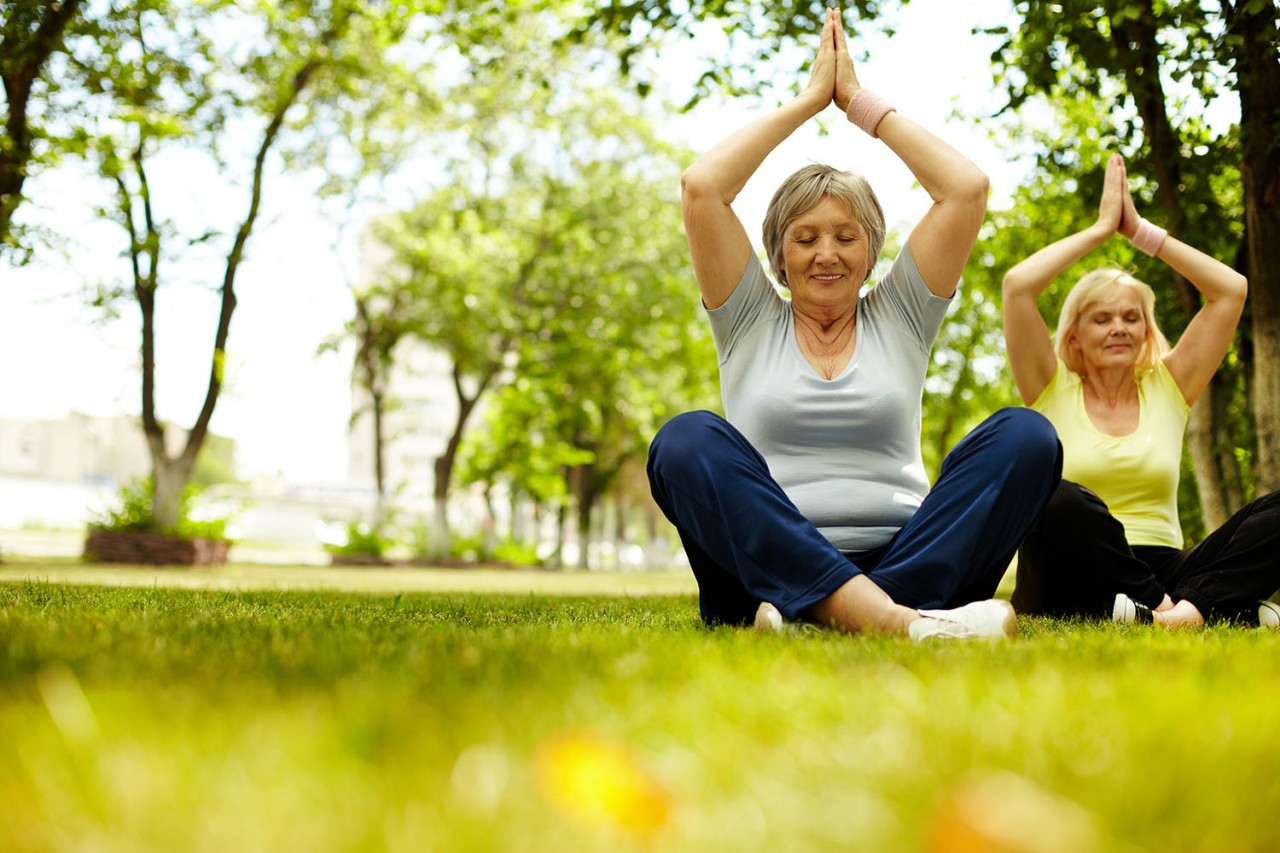The Benefits of Yoga for Seniors

Yoga and Seniors
Yoga has been around for thousands of years. The yoga discipline originated in India and is defined as a system of physical and mental exercises that bring the body and mind together into a harmonious experience. In Sanskrit, yoga means to unite various parts to create balance in the mind, body and spirit.
September celebrates National Yoga Month by recognizing the benefits yoga provides to people of all ages, including seniors.
Senior citizens can reap tremendous benefits from a regular yoga practice. Like other age populations, yoga will provide older people with increased muscle tone, better balance and improved strength. It can also vastly improve a person’s mood, reduce stress and help with breathing through targeted breathing exercises.
There are a multitude of different yoga styles, offering different ways a person can experience the poses and breathing techniques of yoga. Some popular styles include:
- Iyengar Yoga
- Yin Yoga
- Vinyasa Yoga
- Bikram Yoga
- Viniyoga
While each method has a different approach or technique, they are all built on the same basic principles.
Adaptive Yoga: Options for Seniors
For seniors who may have limited mobility or flexibility, there are options called Adaptive Yoga include styles like Chair Yoga or Water/Aqua Yoga. These adaptive options can also be a good starting point for someone new to yoga who is unsure of their abilities.
Chair Yoga can be done anywhere, including in a skilled nursing or assisted living facility. In this style of yoga, a participant has the support of a chair. Poses are modified so they can be done while seated, which makes it ideal for seniors who may not have the ability to stand due to balance or strength challenges. Benefits include:
- Improved Strength
- Improved Flexibility
- Reduced Pain and Stress
- Better Sleep
- Improved Proprioception (body awareness)
Water or Aqua Yoga is also low impact and will help with range of motion as well as improving balance and strength. Because the water provides a feeling of weightlessness, this style can be therapeutic for someone with arthritis or other degenerative joint conditions. The body is able to move more fluidly under the water, making aqua yoga a terrific option for older adults.
The use of props in some of the more traditional yoga styles noted above can also help a senior modify particular poses or moves to better fit their physical needs. Bolsters, yoga blocks and yoga straps are some ways a person can aid their yoga practice. For seniors with limited mobility or flexibility, these props provide support that allows them to participate and reap the benefits of yoga.
How Yoga Helps Arthritis
Yoga, like other low-impact exercises, can decrease pain and improve mobility. For people with joint pain from inflammation or chronic overuse, yoga can improve the flexibility in joints and overall muscle strength.
The Arthritis Foundation reports that scientific studies show that yoga can also lower stress and tension which in turn can promote better sleep. The psychological benefits are as strong as the physical improvements a person can experience.
Yoga can also be beneficial for persons suffering from fibromyalgia, which is a disorder characterized by widespread musculoskeletal pain.
Try a Yoga Practice This Month!
Since September is National Yoga Month, this is a perfect opportunity to try a yoga class. Whether the class is for yourself or a loved one who may benefit from any of the popular adaptive yoga options, we encourage you to continue moving. Whether you choose yoga or any other kind of physical activity, movement will provide endless health benefits to your mind, body and spirit.
